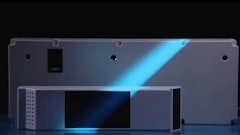
Food safety is an integral part of the food and beverage supply chain. In recent years, several foodborne illnesses have impacted the public. In 2023 alone, there have already been more than 40 food and beverage product recalls. As a result, many foodservice companies have implemented a variety of practices to reduce exposure to environments and temperatures that could allow harmful bacteria, viruses or parasites to thrive. Ensuring safe temperatures for food is no small feat and presents additional challenges with the added components in the transportation of food. To make the process more manageable, many food and beverage supply chain leaders are turning to technology for temperature tracking and reporting.
With this new dynamic, many service providers have created small, customizable devices that facilitate the temperature tracking of product. The devices are programmed to alert the user when a product has exceeded the pre-set temperature range and document the occurred length of time. The visibility and maintenance of product temperature throughout the supply chain instill confidence in value chain partners that they are providing quality products to consumers while protecting both their brand and the public.
Temperature-tracking technologies
There are several types of technology available in the market that enable temperature tracking across the food supply chain, and it is important to understand them in order to determine which one would integrate best into your operations.
Real-time devices
Real-time temperature tracking allows you to swiftly address any temperature issues, potentially eliminating a total loss of product. Real-time tracking technology continuously monitors the temperature and sends immediate text or email alerts to the driver if the temperature is outside the acceptable range. One common way that users efficiently leverage real-time temperature trackers is by preloading the device with the shipment information and scheduling it to turn on upon adhering to the packaging. Leveraging geofence location technology, the device facilitates an automated shutdown process when the product registers at the final geo-location. Due to the number of capabilities the product offers, real-time tracking devices have the highest price tag on the market.
Data recording
Data recording tracking devices collect data in different intervals of time that are customized based on the customers’ needs, such as product sensitivity and transit variability. After a pre-set length of time, the data is displayed in a user-accessible portal providing visibility to stakeholders. This approach does not always allow for corrective action since drivers aren’t notified during transit if the temperature shifts to an unacceptable range. Data recording trackers tend to be less expensive than real-time trackers because of their differences in capabilities.
Spot tracking
While the use case determines the best technology investment for a shipper, real-time and data recording are considered the industry gold standard compared to spot temperature tracking. Spot tracking technology collects temperature data at the beginning and end of the delivery without any temperature monitoring between the initial loading and the delivery of the product. If the temperature stayed within the set range at the spots it was checked, then it is deemed acceptable. These devices range significantly in price based on the capabilities, size and brand of the tracker. The susceptibility of a product to changes in temperature and the cost of trackers will impact the decision on which timing capability is needed.
Temperature-tracking challenges
As with anything, the temperature tracking process is not without roadblocks. Varying factors from labor to placement of the tracker can pose potential risks to data accuracy. Success hinges on developing and executing a detailed process, requiring correct action from all involved parties.
Labor
Labor is a multi-faceted issue when it comes to temperature tracking challenges. Resource education is vital to the success of temperature tracking and corrective action. Within the food industry, high turnover rates can cause knowledge gaps regarding the trackers and their processes. Because of labor shortages, many supply chain leaders are de-prioritizing traceability program awareness and tracker compliance. Corrective action for temperature adjustment is a time-sensitive and manual process that often falls through the cracks amid staffing constraints.
Tracker placement
If adhered improperly, trackers will have difficulty collecting temperature data due to objects obstructing or covering the sensor. Therefore, staff members placing a tracker incorrectly at the start of the process could skew the data results and cause unreliable data. Typically, the device will be applied to a single pallet per truckload and positioned in the front of the truck near the doors. In the event of a multi-stop route, the temperature data may be influenced by exposure to outside air upon opening the trailer doors. Despite these challenges, the large majority of food transporters moving temperature-sensitive products have adopted some form of temperature tracking technology.
Cost and ownership
Cost, ownership and responsibility management should be considered when implementing temperature tracking devices. Will the added cost be put on the supplier who is applying the device or the entity requesting the devices be used? If the supplier were to be liable for the cost of implementation, there may be a cost impact passed along to the end consumer. Additionally, some of these devices are intended for multi-use, which introduces a logistical component of retrieving and returning the devices from the final location back to the origin for reuse. Failure to retrieve the device would increase the program costs.
Selecting the right tool
Food safety incidents can have immense impact on the public and a brand’s reputation. Taking a proactive approach to food safety is as important as ever. As food safety standards continue to be spotlighted in the public, the need for accurate, efficient and cost-effective technology grows. There are several offerings in the temperature tracking space, varying with different capabilities and add-ons that can be customized to fit your business’ needs. When temperature tracking technology is implemented and operated correctly, it is an effective solution to ensuring the safety and quality of food for customers.



















